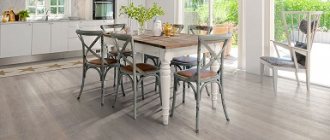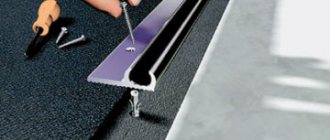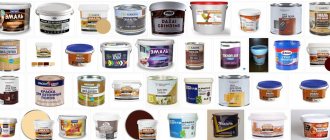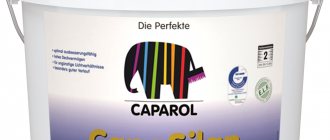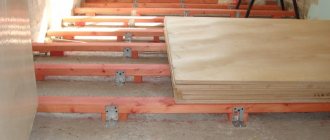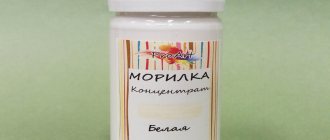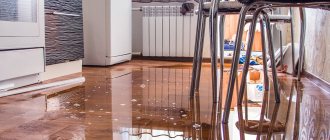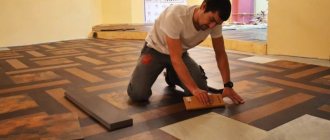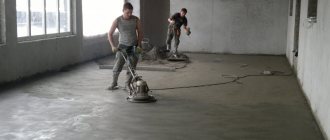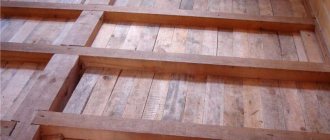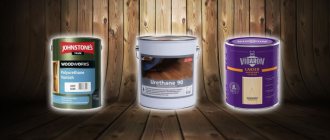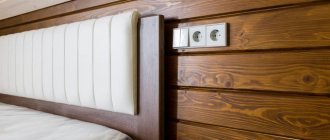For many people, the word “stain” is associated with a certain liquid that can be used to give a wooden surface a particular shade. This property is present, but not only.
Wood stains have excellent antiseptic characteristics and can make wood more durable. The material is not a coating material, like paints and varnishes. Stains belong to the category of impregnations, as they are able to penetrate deeply into the structure of the wood. They are used for processing new wood products or coatings, as well as in the process of restoring old wooden objects.
Varieties of stains
So, what is stain? This is a ready-made liquid composition based on water, alcohol or oil, as well as a special powder that must be dissolved in water or alcohol-containing liquids.
Water stain is considered the cheapest. It penetrates the wood quite deeply. Available in a wide range of colors, it can be used to give any color to a wooden product or structure.
A significant disadvantage of water-based wood stain is its ability to lift fluff from the surface, thereby reducing moisture resistance. The negative impact of this impregnation can be reduced by pre-wetting the surface with clean water. After curing, the product is processed with sandpaper and then covered with stain. Oil stain for wood can give a wooden surface any color shade.
It is easy to apply to the surface and distribute evenly over it. Dries quickly and does not raise lint. It is obtained by mixing oil-soluble dyes.
It is diluted to the desired consistency with white spirit. An alcohol-based stain is a solution of aniline dyes in any alcohol. Most often it is used with a spray bottle. It is difficult to distribute this liquid with a brush, since due to the almost instantaneous drying of the solution, the coloring turns out to be uneven and spotty.
If the above varieties of stains impregnate the wooden surface, coloring, strengthening and disinfecting, then new acrylic and wax impregnations in addition to this create a protective film on the wood. The surface treated in this way does not require additional coating with varnishes or paints.
How to prepare wood for processing
Treating wood with stain is not such a simple process as it may seem to an ignorant person. To achieve the desired result, it is necessary to take into account some of the subtleties and nuances of this procedure, and also perform all stages of staining in order.
First you need to choose a color, a suitable composition of the solution and tools for applying it.
For quick-drying compounds, you need to prepare a spray gun or other sprayer. You can work with oil, water or acrylic stains with a brush, sponges, or swabs. It all depends on the size of the surface to be finished and the expected effect. Preparing a wooden product for painting involves drying the new surface or cleaning the old one from the previous finish to the body of the wood.
The dry product must be carefully treated with sandpaper or a grinding machine. To avoid the appearance of new defects, movements should be carried out along the fibers. Scratches, dents, and chips on an untreated surface may be inconspicuous, but after coating with wood stain they appear quite noticeably. By grinding, the treated surface is brought to a completely smooth state.
Then the dust and removed fibers are removed. To do this, you can use a vacuum cleaner or a soft cloth. The next stage is degreasing, most often done with white spirit. Before applying the main composition, especially water stain, the product must be moistened with clean water. And sand again.
Some nuances occur when preparing coniferous wood products for working with stains, especially those with high resin content.
The fact is that after applying the stain, resinous areas can appear through the coating in ugly spots. It is best to first rid such wood of such manifestations. To do this, use one of the compositions:
- an aqueous solution of acetone, for this purpose mix 750 g of water and 250 g of acetone; a soda mixture consisting of one liter of warm water, 60 g of soda ash and 50 g of potash (potassium carbonate).
To get rid of the resin completely, the treatment must be performed several times. Then rinse the product thoroughly with soap and then with clean water. Dry and then carry out traditional preparation for staining.
Types of construction antiseptics
Building materials such as brick, concrete, plaster, and dry mixes are also susceptible to fungal infections. As a result, the material cracks and swells, which leads to the appearance of unsightly dark spots on the walls, peeling of the plaster and chipping of fragments of brick and concrete. In some cases, experts advise introducing a sanitizing antiseptic into the building material at the stage of its manufacture.
According to the scope of application, all antiseptics are divided into several types:
- Antiseptic for wood.
Natural wood is widely used in construction, but if used incorrectly, it very quickly deteriorates and collapses, and this in turn leads to huge losses. It is possible to achieve long-term preservation of the strength of wood. This is why there are modern construction antiseptics, which are used everywhere today.
According to the type of application, all antiseptics are divided into oil-based and water-soluble. Both types have the same main effect - they protect the tree from destructive microbes and bacteria.
The appearance of fungus and mold on the walls of damp, poorly ventilated rooms is not uncommon. Basements, cellars, storage rooms, and rooms with poor ventilation are most susceptible to infection. Modern non-toxic and hypoallergenic antiseptic compositions are effective not only on concrete, but also on brick bases. They disinfect the surface and prevent the appearance of new mold and germs. Manufacturers provide a guarantee of up to ten years for the protective effect of some types of antiseptics. But we should not forget that much depends on the operating conditions in which the object is located.
- Antiseptic for plaster.
Allows you to significantly improve the appearance of the surface and increase its service life. This antiseptic can be used as a protective base for any subsequent coating.
It is recommended to use before starting exterior finishing work. This treatment of facades eliminates microbiological contamination and prevents subsequent destruction of the surface. External antiseptics are effective in combating
with mold (antifungal effect), lichen, moss, blue-green algae and bacteria. Plaster, paint and other finishing materials adhere much better to a surface treated with this composition. Facade antiseptic allows you to increase the service life and improve the quality characteristics of the external surfaces of buildings.
Dyeing technology
How to stain wood correctly? You should work at an air temperature above +15°C, this will allow the stain to penetrate deep into the pores of the wood. Manufacturers recommend that before applying the base substance, cover the surface with conditioner of the same brand.
The stain should be mixed thoroughly so that the dye does not remain on the bottom or walls of the vessel. When using any tool (brush, roller or sponge), a sufficient amount of stain should be applied to the surface. Let it be better to have an excess (it can be removed after staining) than a deficiency.
When processing a vertical surface, you need to work with movements from bottom to top. If you are staining a horizontal part, you must first move the brush along the grain of the wood, then across it, then again along it. This way you can achieve uniform application and avoid unnecessary smudges.
Staining one part or surface must be done in one go, without interruptions. Otherwise, spots and uneven coloring may appear.
To obtain an even tone and a high-quality result, the staining process is repeated several times. Each subsequent layer is applied only after the previous one has completely dried.
How long does it take for stain to dry? The drying time depends on many factors: the composition of the stain, the ambient temperature, the degree of humidity of the base. On average, alcohol-based compositions dry in 1-2 hours, aqueous solutions - at least a day.
After the impregnation has completely dried, the surface is subjected to the final stage of wood processing, which is called washing. This action removes excess stain that the tree did not accept.
The procedure helps the wood to reveal itself in all its beauty and brilliance. Cleaning is done using acetone and a large paint brush. The product is installed at an angle on a soft substrate.
The brush must be moistened with acetone and brush off excess stain using top-down movements. As soon as the treated surface acquires a uniform appearance, the procedure is completed. Now the product needs to be dried and can be varnished.
Multi-colored dyeing
Wood stain, what is it for?
It would seem that the technology and material have long been known. But the question remains open for many. Staining wooden surfaces is done in order to give them a certain shade that emphasizes the texture of the wood.
In addition, stain makes the wood stronger and more resistant to damage from dampness, mold, fungi and wood-boring insects. But the possibilities of staining do not end there. Using stains of different colors you can create various effects on a wooden surface:
- bleaching; aging; color stains.
To create a bleached surface, two compositions of different qualities are used.
First, a continuous coating is made with white water stain, which is thoroughly dried. And then all the recesses and pores are filled with an oil-based stain with the addition of hard wax. In this case, a very thin waxy film is formed, which highlights only the pores in black or gray, while the rest of the surface remains whitish.
If it is necessary to obtain a multi-colored effect, then first a test is made to select shades on a separate piece of sanded board. When it is possible to achieve the desired color combination, we begin processing the product.
First, the main background is applied. Then chaotic or ordered strokes are made over it with other color shades of stain. The finale will be a final coating with clear or tinted varnish.
Wood requires special protection; in most cases, to solve this issue it is enough to use paints and varnishes. For example, you can learn how to stain wood. It will be able to penetrate the wood structure and protect wooden products from deformation, moisture and dirt.
Wood processing materials
First you should study the existing range of paints and varnishes. We pay attention exclusively to options intended for lumber.
Features and purpose
They produce different stain compositions, but the range of impregnation functions does not change.
- Wood tinting without radical changes in structure and natural pattern. The composition only lifts the fibers of the material. Even a simple array looks expensive after processing.
- The stain has bleaching properties. This quality is used by restorers to return products to a presentable appearance, as well as by craftsmen when preparing material for color varnishing.
- After impregnation, the wood fibers are strengthened, which helps restore the structure.
- The product creates a protective layer against microbiological processes and prevents damage to the material by parasites.
- Coating wood with stain increases moisture resistance, especially when using separate compounds that create a water-repellent effect.
- Treated products are not subject to premature destruction. Their service life increases significantly.
- By using different shades of stain, it is possible to imitate a combination of different types of wood on one object.
This coating is very popular due to its versatility.
Professionals call stain stain. A liquid product is always used when working on old wood to restore its aesthetic qualities.
Alcohol varnishes
Shellac
A group of transparent and translucent coatings that can be used to add shine to a surface and also protect it from external factors. They include complex components:
- shellac; sandarac; copal; synthetic resins.
Carefully study the label with the varnish; the strength of the alcohol used must be at least 90º. Ethyl alcohol can be used as a solvent.
The right product will highlight the structure and tone of the wood.
Special stabilizing impregnations
Such compositions are used for processing marble and granite, joists, footrails and hidden surfaces, surfaces painted with lime or covered with plaster. Their main function is to strengthen the surface, enhancing adhesive, weather-resistant and water-resistant properties.
To extend the life of wooden structures, special impregnations are used that are designed to protect wood from rotting, pests, and also protect against fire.
Some types of impregnations can be used on carpets and fabrics to give them antiseptic and fire-retardant properties.
Oil varnishes
Oil varnish
Among the main components are resins and pigments that are dissolved in oil. The consistency can be liquid or semi-liquid, which allows it to be applied to the surface of wood with a brush or roller.
Affordable price is an attractive and positive factor for the majority of the population. After treatment, a thin transparent film appears on the surface, which acts as a protective barrier to moisture and ultraviolet healing. A characteristic yellow tint may appear.
A high degree of protection allows you to coat wooden products that are in the open air with oil varnishes.
Nitrocellulose varnishes
Nitrocellulose
The base includes nitrocellulose, which is diluted in organic solvents. The applied layer will take a long time to dry, so you should take the item away from open windows and doors. The resulting hard coating will be resistant to both sunlight and mechanical loads.
When working with this varnish, you need to take care of your protection: wear a respirator, safety glasses and rubber gloves.
stain
The staining process is used to impart a specific color to wood, in particular the color of a different type of wood.
The applied composition will penetrate into the structure without creating a film. This allows you to highlight the structure and pattern of the wood and, in addition, protect the wood. Main types of stains:
- water-based; solvent-based; wax-based; alcohol-based.
In a specialized store you can find the following assortment of stains: liquid concentrate, solution and powder.
Impregnations
The appearance of impregnations was caused by the need to give building materials additional characteristics: to make their surface more durable, heat-resistant and impervious to moisture, which, penetrating into any porous material, gradually destroys it from the inside. Impregnation is also indispensable when painting an old surface. It will allow you to compact the lower layers of paint, level the surface, give it a beautiful uniform color and significantly reduce paint consumption.
Modern construction impregnations have the following properties:
1. disinfectants
2. preservative
3. strengthening
4. water-repellent
5. antiseptic
6. anti-salt.
Removing an old layer
The wooden surface should be prepared
It is necessary to apply both varnish and stain exclusively to the prepared surface, if we are talking about an old piece of furniture. Today, you can use three ways to clean wood from old coating:
- washing; thermal impact; mechanical impact.
Use varnish remover
It is necessary to determine which method is suitable on an individual basis, based on the type of product and paint and varnish materials that were used before. Let's consider each method separately.
In the first case, the old varnish is removed using special liquid solutions. It is applied to the surface with a regular paint brush, after which it is wrapped in plastic film to create a thermos effect. After a day, the coating is removed using a spatula and washed with water.
Applying a new layer is possible after 24 hours. The second method is faster, but for this you will need a hair dryer. Armed with a simple spatula, you can begin the process: a small area is heated and the old coating is carefully removed. The third option is suitable for treating a large area, such as a cabinet or floor. You will need a grinding machine from special tools; the residues are cleaned with sandpaper.
After treatment with the remover, cover with film.
In most cases, solvents contain toxic substances, so you should wear a respirator when working with them.
Surface preparation
Defects and cracks are eliminated with putty
It is not enough to simply remove the old layer; the surface needs additional processing, that is, grinding. Regardless of whether the material is new or old, it must be carefully examined for defects. If seams, cracks and knots are found, they should be eliminated.
The gaps at the joints are sealed with a special putty for wood. After drying, the irregularities are smoothed out with fine-grain sandpaper. There is no need to process raw wood, since all actions will be meaningless: when drying, the wood is deformed, and accordingly, the applied layer is also deformed.
Applying stain
Due to the property of deep penetration of stain into the pores of wood, the solution enters into a chemical reaction with tannins, due to which the product will be completely protected from fungi, mold and insects.
To know how to properly apply stain to a wooden surface, you need to familiarize yourself with technologies and techniques. Rubbing. The stain is applied to a wooden surface, and then rubbed over the entire area. The result is a pronounced texture and natural pattern. Stains are especially good for porous types of wood; compositions with a long drying time are suitable for them. Spraying. The shade of the stain is selected several tones lighter than the desired one.
The liquid is applied using a spray gun, resulting in a perfectly flat surface. Roller or swab. As in the case of painting the surface with a roller, you will need a special tray. Liquid stain is poured into it and then applied to the wood. No streaks or drips.
This technique is especially popular when treating floors. To make a tampon you will need cotton wool and a clean cloth. A brush. Simple and accessible technology for everyone. It should be noted that coating in one layer will give a color that is relatively deeper than with other similar application methods. Use a brush All of the above tools for staining wood are equivalent, so when choosing, you can be guided solely by your own preferences. The processing technology is no different from conventional painting.
But there is one important point: most stains dry out very quickly, so you should work quickly and carefully. Do not let the applied layer dry before completing the work, otherwise this area will differ from the rest of the surface. The stain must be applied parallel to the grain of the wood, avoiding the layers touching. As you can see, the process is quite simple. The number of layers applied depends on the desired shade.
To consolidate the result, the wooden product or surface must be varnished.
Preparatory stage: making a color sample
After purchasing the stain, but before starting the actual painting, it is advisable to make a color sample (test paint). It is necessary to understand whether a given stain is suitable for a particular surface, to identify the final color and determine the number of layers of paint required.
To make a color test, use a board that has been treated (sanded, sanded) in the same way as the wooden surface to be painted. Naturally, the type of wood of the sample board should also coincide with the main surface.
The board is covered with stain in one layer. After drying, the second layer is applied to 2/3 of the sample. The third layer paints another 1/3. The dried stain is covered with two layers of varnish. By comparing the color intensity of each part of the sample, choose the number of layers that is most suitable for a particular surface.
To choose the most optimal option, several test colors are often done. To do this, several boards are coated with different stains. Then they make a choice.
Removing old coating
Always apply varnish to a clean surface.
If this is a new product, then no problems arise. But there are often cases when it is necessary to varnish already painted wood, such as window frames, doors or wooden floors, the surface of which has been damaged due to long-term use. And if the integrity of the coating is compromised, then its protection is also compromised. Therefore, before starting a new treatment, you need to completely clean the surface of the old varnish layer.
There are three main ways to clean wooden surfaces from old coatings: washing with special solvents, thermal or mechanical action. It is necessary to determine which method is best to use in each case individually, based on the type of product and the materials used to cover it.
The surface of the product is wetted with a solvent, then removed with a spatula.
In the first method, the old varnish is removed using special liquid solutions, with which the entire surface of the product is generously moistened with a paint brush.
Immediately after processing, the product must be covered or wrapped with plastic film to create the effect of a thermos. After 24 hours, the film is removed and the old coating is carefully removed with a spatula. If the coating is difficult to remove, the entire procedure is repeated again, and so on until the wooden surface is completely cleaned.
When working with solvents, it is important to remember that they contain toxic substances. Therefore, they must be applied with glasses, rubber gloves and a respirator.
After cleaning is completed, the wood is wiped with warm water and allowed to dry for at least a day. After this, the surface is sanded and primed again. And only after this can a new varnish be applied.
In the second method, the wood is heated to remove the old coating. At the same time, the varnish softens and can be easily removed with a spatula.
Heat with a hairdryer, you can also use a blowtorch. But it is more difficult to work with, because you need to constantly ensure that the wood does not overheat and catch fire. To protect it, it is better to first moisten it with water and only then process it.
The latter method is more often used if you need to remove the old layer of varnish from a large area, such as a floor or a wooden terrace. Remove it using a grinding machine, and the remaining varnish is removed with sandpaper.
Antiseptics
Antiseptics, like impregnations, are used to protect building materials from damage and destruction. They contain biocides and poisons that help destroy certain microorganisms and prevent their reappearance. The scope of application of construction antiseptics is extensive. They are used for treating lime and lime-cement surfaces, brick, concrete, joints between tiles, facades, plasters, walls, ceilings, and wooden structures. High-quality antiseptics have the following properties:
- they are safe for human and animal health, but are highly toxic to fungi, mold and insects;
- do not change the physical and mechanical properties of materials with which they come into contact;
- have the ability to penetrate deeply into concrete and wood;
- do not change their properties during storage and use.
Surface preparation
All cracks on the wooden surface must be carefully puttied and sanded.
The varnish can only be applied to a sanded smooth surface. Regardless of whether the new material needs to be varnished or the old one, it must be carefully examined. All discovered seams, cracks and knots must be processed and eliminated.
Any gaps found between seams and joints must be sealed with special putty. After application, the putty is allowed to dry, and then, to remove possible unevenness, the putty areas are sanded again with fine sandpaper.
It is also necessary to take into account the fact that it is pointless to putty on raw or even under-dried wood, much less treat it with drying oil, stain or varnish.
When drying, the wood becomes deformed, and the applied layer will inevitably be damaged.
The stain should be applied parallel to the grain of the wood, avoiding contact between the layers.
To better protect wooden products, they must be treated with stain (impregnation).
The stain, penetrating deeply into the pores of the wood, enters into a chemical reaction with the tannins found in the growth rings and gives the wood a durable water- and light-protective color. It also protects the tree from mold fungi, grinding beetles and other pests and infections. Modern liquid stains are divided into three groups: alcohol, oil and water.
Water stains come in two types: in the form of ready-to-use solutions and in the form of powder, from which such a solution must be prepared. This is the only type of stain that does not require white alcohol, drying oil and other solvents.
Stains of this group have one significant drawback: penetrating into the wood, they lift its fibers, which makes the wood unprotected from excess moisture. Although, on the other hand, such processing of wood allows you to emphasize and highlight its structure. Therefore, today this is the most common type of stain.
Alcohol stain is produced in the same two varieties: ready-made and in powder. This stain cannot be applied manually with a brush, but only with a spray gun, as it dries in almost seconds.
Oil stain is the most convenient to use.
It is easy to apply evenly, does not lift wood fibers and dries quickly. In addition, by mixing dyes in oil, you can use it to give the wood almost any shade. Oil stains are diluted with white alcohol or drying oil.
To treat wooden surfaces with stain, the following are used:
- paint brush; foam roller; manual or automatic sprayer.
All of these tools for staining wood are of equal value, and when choosing, you need to be guided solely by common sense. For example, it takes a very long time to stain several dozen squares of wooden floors with a paint brush, and you can’t treat the window frames with anything else other than a brush.
The staining technique is no different from conventional painting.
The only condition: since most stains dry quickly, you need to work quickly but carefully. It is important not to let the stain layer dry before finishing the work, otherwise there will be a seam in this place that is noticeably different from the rest of the surface. Therefore, you should not put a lot of solution on the brush.
The stain is always applied parallel to the direction of the wood grain. And you cannot move on to processing another figure or section without finishing the first one. In places where two sections are connected, care must be taken to ensure that the applied layers of stain do not overlap each other.
What are protective impregnations for wood?
Impregnations often include all compounds used for wood processing. This is not correct, since stains, primers and antiseptics are independent products. Impregnations are protective compounds that perform one specific task. According to this principle, they are classified into the following groups:
- waterproof - designed for structures in contact with water or located in rooms with high humidity. These compositions prevent the appearance of putrefactive lesions and changes in geometric parameters, protect the tree from freezing;
- biocidal – protect wood from microorganisms;
- fire retardant - increase the degree of fire resistance of wood, help slow down the spread of flame.
When choosing a composition, it is necessary to take into account the absorbency of wood, the conditions of its operation and the period for which it is necessary to protect the structure from a negative factor.
Impregnations are produced colorless or imitating the color of expensive wood species. The composition can be based on water or an organic solvent, which allows you to select products for interior and exterior work. The duration of treatment effectiveness depends on the concentration of active substances. This must be taken into account when choosing compositions for structures located in hard-to-reach places.
